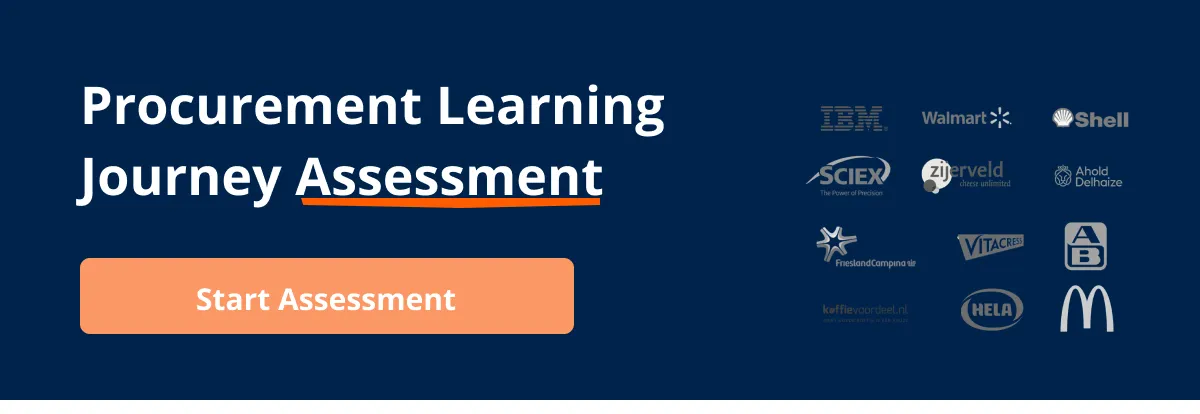Written by Marijn Overvest | Reviewed by Sjoerd Goedhart | Fact Checked by Ruud Emonds | Our editorial policy
Supply Chain Collaboration — Streamlining Your Supply Chain
Key takeaways
- Supply chain collaboration is the practice of collaborating with internal and external partners to help optimize the flow in the supply chain to meet the demand and ensure on-time delivery.
- Horizontal collaboration refers to companies that are working together at the same level of the supply chain.
- Vertical collaboration involves companies at different stages of the supply chain working together.
Nowadays, supply chains are highly interconnected with one another. As a result, disruptions like natural disasters, political turmoil, and other tensions can become major roadblocks. To combat these disruptions, collaboration among supply chains is necessary.
In this article, we are going to discuss what supply chain collaboration is. We will focus on the two types: horizontal and vertical collaboration. In addition, we will share an example of real companies that have a successful supply chain collaboration story.
After you finish reading this article, you will learn about the intricate system of supply chain collaboration and its significance in addressing the disruptions that impact businesses and individuals.
I have created a free-to-download, supplier questionnaire template. It includes a PDF file that contains the questions that you can ask your collaborators in the supply chain for you to work together effectively.
What is Supply Chain Collaboration?

Supply chain collaboration is a strategy where it involves many companies working together to mitigate the risk of disruptions that can decrease the productivity of the supply chains.
In supply chain collaboration, businesses may collaborate in different stages or even in every stage of the supply chain process to accomplish their common goals.
Supply chain collaboration also has two types: horizontal and vertical collaborations. These types are the two ways how companies collaborate which we will further explain in this article.
The main purpose of this collaboration between businesses is that it enables them to identify and address the risks much faster by working together.
As these companies identify the bottlenecks, they can ensure smoother delivery of products, enabling them to streamline their supply chains successfully.
Collaboration naturally offers many opportunities. In my role as a procurement manager at Friesland Campina and Ahold Delhaize, I’ve contributed in various ways and initiated various forms of supply chain collaboration.
Below, I’ll elaborate on the potential forms of horizontal and vertical collaboration, including some concrete examples
What is Horizontal Collaboration?
Horizontal collaboration refers to the term that describes the joint effort of companies to work together at the same level of the supply chain. It involves businesses that offer similar products or services in different regions. Here are some examples of horizontal collaboration:
1. Shared Warehousing and Distribution Centers
In this example, competing companies work together to share warehousing and distribution facilities. These shared facilities help the involved companies to reduce their costs associated with storage and transportation.
Additionally, this may involve the pooling of resources to operate jointly managed distribution centers or even utilizing each other’s facilities in different parts of a region.
This is perhaps one of the most commonly used forms of collaboration. There are so many large players proficient in logistics distribution.
Therefore, in my opinion, it’s very unwise for smaller suppliers to do this themselves. I would always advise looking for good logistics service providers or partners
2. Joint Transportation and Shipping
For this example of horizontal collaboration, competing businesses or companies collaborate on transportation and shipping to take advantage of economies of scale and decrease transportation costs.
Joint transportation and shipping usually involve sharing trucking routes, consolidating shipments, and even jointly owning trucks or vessels.
3. Collaborative Inventory Management
In collaborative inventory management, companies coordinate their inventory management practices to manage stock levels and decrease the chances of stockouts.
They carry this out by sharing information on inventory levels, demand forecasts, and product schedules that can help them better synchronize supply and demand.
4. Coordinated Procurement
In this collaboration, competitors team up to negotiate bulk purchases of raw materials to achieve lower prices and better terms from suppliers.
By joining their purchasing power, they can secure large discounts and ensure a stable supply of inputs at lower prices.
5. Joint marketing and Promotions
In joint marketing and promotions, businesses work together with their campaigns and promotions to expand their reach and attract more customers.
Usually, companies do their work together through joint advertising efforts, co-branded promotions, or cross-promotions where products from different companies are bundled together.
You can see this when you go to the supermarkets and there are bundled products from different companies that are on sale.
6. Shared Reverse Logistics
Here, businesses collaborate on reverse logistics processes to decrease their costs and improve business efficiency.
Businesses often share resources and infrastructure when working together for reverse logistics to streamline operations and minimize their waste.
What is Vertical Collaboration?
Vertical collaboration refers to the collaboration of companies at different stages of the supply chain. It can take numerous forms that depend on the specific needs of the collaborating companies. Here are some of the examples of vertical collaboration:
1. Vendor Managed Inventory (VMI)
In Vendor Managed Inventory, suppliers are responsible for managing the inventory levels of products at the customer’s location.
Usually, the supplier employs a range of inventory management techniques and tools to track the stock levels and predict when the customer will require replenishment.
By managing the inventory levels in this way, the supplier helps to ensure that the customer can operate efficiently and effectively without worrying about stock shortages.
VMI, in my opinion, is one of the most intriguing options for vertical collaboration. This was implemented at several of the companies where I’ve worked. The challenge here was ensuring that the supplier had access to the right data.
Once achieved, it presented a tremendous opportunity, with various examples showing that despite the overall inventory level being lower (resulting in a positive cash flow impact), availability improved.
Add to this the fact that it required less effort on our part as we didn’t have to place orders, and you can see that this is an option that is highly beneficial for both the supplier and the customer.
2. Just-in-Time (JIT) Deliveries
For this, the supplier delivers materials only when they are needed for production. This allows companies to reduce their need for a large inventory which will help them minimize their storage costs.
3. Collaborative Planning, Forecasting, and Replenishment (CPFR)
For CPFR, manufacturers and retailers work together to anticipate customer demand and create joint plans for production and distribution.
They share data on customer demand, sales trends, and inventory levels to develop a comprehensive understanding of their customers’ needs and preferences.
With this information, they develop joint plans for production and use advanced analytics and supply chain management tools to optimize their production schedules, minimize transportation costs, and ensure the timely delivery of products.
This strategic partnership enables both parties to reduce costs, minimize waste, and enhance the overall efficiency of their supply chain.
4. Joint Quality Control and Improvement
Suppliers and customers working together can improve product quality. This can be achieved through joint quality audits to find and fix potential issues early.
Sharing best practices allows both parties to learn and improve their processes, leading to a higher-quality end product.
Additionally, collaborating on solutions to quality problems helps identify root causes and prevent future occurrences.
This example of vertical collaboration throughout the supply chain ultimately benefits everyone with better quality products.
Key Differences Between Horizontal and Vertical Collaboration
Below is a table to help you easily differentiate between the two types of supply chain collaboration:
Real-Life Examples of Supply Chain Collaboration
Here are some examples of collaborative efforts done by well-known companies:
1. L’Oréal’s communication and trust approach
L’Oréal follows a communication and trust approach to encourage collaborative innovation. By openly communicating to its partners its goals and long-term commitments, it has been able to establish an effective development process.
L’Oréal’s annual exhibition offers suppliers a rundown of the consumer trends that it will work on and then asks them to develop packaging solutions that suit these trends. Thus, the exhibition allows L’Oréal to create a trust-based forum for suppliers to present their ideas and products in development.
2. P&G’s value-sharing model
The number one reason why suppliers and buyers take part in collaborative projects is due to shared value. Thus, why procurement professionals consider it the most important dimension of their collaboration efforts.
P&G used a wide range of commercial models to partner with suppliers across the entire research & development chain. Its value-sharing model involves shared fun pools for the co-development of products and licensing agreements for commercialization.
The flexibility to employ different approaches allowed it to tap into supplier innovation without the necessity of overinvestment in the development of deep partnerships with every potential collaborator.
3. Toyota’s defined target approach
Toyota is a prominent example of supplier collaboration through its clearly defined targets and supplier performance metrics. These are built into contracts that hold suppliers responsible for continuous improvement in cost, quality, and delivery performance.
Toyota governs supplier relationships through a steering committee to define the scope and objectives of the collaboration. It also reviews the progress of the collaboration and takes action to resolve issues that may arise.
Conclusion
In conclusion, supply chain collaboration is important for businesses to mitigate the problems that can disrupt their supply chains.
In this article, you learned that supply chain collaboration has two types: horizontal and vertical collaboration.
In horizontal collaboration, companies work at the same level in the supply chain, sharing resources, expertise, and strengths to achieve common goals.
On the other hand, vertical collaboration involves companies at different stages of the supply chain working together to enhance efficiency, transparency, and responsiveness.
These two types of supply chain collaboration can help address disruptions in the interconnected business landscape.
By working together, businesses can effectively navigate challenges and create mutually beneficial partnerships throughout the supply chain ecosystem.
Frequentlyasked questions
What is supply chain collaboration?
It is the practice of collaborating with internal and external partners to help optimize the flow in the supply chain in order to meet the demand and ensure on-time delivery.
Why is it important?
It is important as it is one of the ways to find top talents in the supply chain.
Why do many companies prioritize collaboration?
This is to support their distribution process to deal with the growing complexity and list of supply chain disruptions and risks, especially nowadays.
About the author
My name is Marijn Overvest, I’m the founder of Procurement Tactics. I have a deep passion for procurement, and I’ve upskilled over 200 procurement teams from all over the world. When I’m not working, I love running and cycling.


